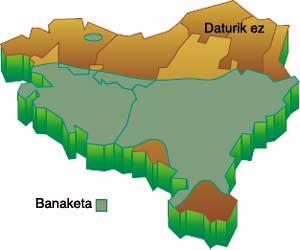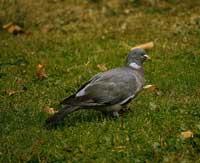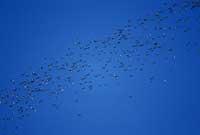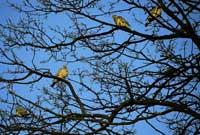Next to the southern wind ... the madness of pigeon hunters

Although we usually don't have much confidence in what weather forecasts say, there are people who hear more from early October: the group of pigeon hunters. Hoping to capture one of those days when the dove passes through the year. And as the best shakes are done with south wind, at the end of the program they want to hear that's what it will do. What about this animal that appears in our sky every autumn without missing?

The torcaz dove (Columba palumbus) is the largest. Excellent bird looking so robust and strong flight, with a length of 40-42 cm. and an approximate weight of 500 grams. Its color is gray-bluish and presents, both sides of the neck and on the slopes, marked white lines. It has reddish chest, yellow eyes and small head. The long tail with black tip can be separated if it can be seen from a certain distance. The two sexes are equal. Juveniles, on the other hand, are more gray than adults and have no signs of white and green feathers on both sides of the neck.
As for food, torcaceous pigeons feed throughout the year of horreos and green parts and seeds of plants. In autumn, the diet of the animal consists of pine, beech, oak and oak seeds. The desire to eat the seeds mentioned leads the groups of pigeons to fields and fields, causing the anger of the farmers.
Unlike other birds, the torcaz pigeon does not feed on a diet of animal proteins in the first days of life. In fact, adults give puppies a milk-like liquid from mammals produced in their own breast virapo.
The nest is a relatively weak structure formed by chopsticks and manure built on the trees, where the female lays two white eggs from April. Boys and girls were born at 17-19 days, with a fairly delayed development, but another 20 days, they can leave the nest. Thanks to this speed in the development of the kid, it can have two and three positions, the last of them, the most successful of the end of summer foundation crops.

The Torcaz dove has a wide distribution throughout Europe, from the Iberian Peninsula and Morocco to Scandinavia and Russia. Although it is not very common in Euskal Herria, in many European countries the torcaz dove is a quiet and abundant animal in the parks and gardens of towns and cities, used in some cases to eat by the hand. How far we find that image of that terrible and wild animal we throw during migration!
This dove, usually in a group, is observed mainly during the migration that passes through our territory, but is sedentary in southern Europe, in the United Kingdom, and in Holland and Belgium, where winter passes. Thanks to the rings placed on the legs, most of the 5-8 million pigeons that come to the south of the Iberian peninsula to winter crossing the hills of the Pyrenees, coming from Scandinavia, northwest of Russia, Poland, and Germany, although in recent years it tends to spend the winter in their countries of origin.
After spending the winter feeding on the acorns of Toledo, Madrid, Extremadura, and the castles of Andalusian holm oak and cork oak, the migration of spring or the counterweight, controversial, occurs in March, although less spectacular than in October.

Pigeon hunting has a great tradition in Euskal Herria and every year thousands of shotguns head to the hills of our mountains in the hope that some dove will come home. But the noise, the excuse and the sound of the shot are many and few pigeons. Like every year, most pigeons go a few days, offering in some places a wonderful show in which they quantify the ones that pass. For example, 450,000 pigeons were recorded at the Sahara Observatory in 1993, mostly 350,000, which were in one day.
The steps of Sara and Etxalar are well known, being the origin of the mode of hunting through very old networks.
Next autumn, hunters from all over Euskal Herria will try to guess the weather and the dove the next day. And if the southern wind blows… madness will prevail.
Technical information Torcaz dove Species: Columba palumbusFamily: |
Buletina
Bidali zure helbide elektronikoa eta jaso asteroko buletina zure sarrera-ontzian











